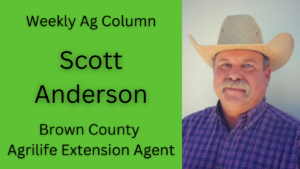
Farmers can begin enrolling in the key farm safety net programs for the 2025 crop year later this month.
Enrollment for the Agriculture Risk Coverage (ARC) and Price Loss Coverage (PLC) programs will be open from Jan. 21 to April 15.
The Dairy Margin Coverage (DMC) program enrollment will be open from Jan. 29 to March 31.
The American Relief Act, 2025 extended many farm bill-authorized programs for another year, including ARC, PLC and DMC. Farmers can submit applications to the U.S. Department of Agriculture’s (USDA) Farm Service Agency (FSA).
“Our safety-net programs provide critical financial protections against commodity market volatilities for many American farmers, so don’t delay enrollment,” FSA Administrator Zach Ducheneaux said. “And at $0.15 per hundredweight for $9.50 coverage, risk protection through Dairy Margin Coverage is a relatively inexpensive investment in a true sense of security and peace of mind.”
ARC and PLC
Farmers can elect coverage and enroll in ARC-County (ARC-CO) or PLC, which provide crop-by-crop protection, or ARC-Individual (ARC-IC), which protects the entire farm.
Although election changes for 2025 are optional, farmers must enroll through a signed contract each year. Also, if a farmer has a multi-year contract on the farm, it will continue for 2025 unless an election change is made.
If farmers do not submit their election revision by the April 15 deadline, their election remains the same as their 2024 election for commodities on the farm from the prior year. Farm owners cannot enroll in either program unless they have a share interest in the cropland.
Covered commodities include barley, canola, large and small chickpeas, corn, crambe, flaxseed, grain sorghum, lentils, mustard seed, oats, peanuts, dry peas, rapeseed, long grain rice, medium grain rice, safflower seed, seed cotton, sesame, soybeans, sunflower seed and wheat.
USDA also reminds farmers that ARC and PLC elections and enrollments can impact eligibility for some crop insurance products including Supplemental Coverage Option, Enhanced Coverage Option and, for cotton farmers, the Stacked Income Protection Plan (commonly referred to as STAX).
For more information on ARC and PLC, farmers can visit the ARC and PLC webpage or contact their local USDA Service Center.
DMC
DMC is a voluntary risk management program that offers protection to dairy farmers when the difference between the all-milk price and the average feed price (the margin) falls below a certain dollar amount selected by the farmer.
DMC offers different levels of coverage, even an option that is free to farmers, minus a $100 administrative fee. The administrative fee is waived for dairy farmers who are considered limited resource, beginning, socially disadvantaged or a military veteran.
DMC payments are calculated using updated feed and premium hay costs, making the program more reflective of actual dairy farmer expenses. These updated feed calculations use 100% premium alfalfa hay.
For more information on DMC, visit the DMC webpage.
***
FEBRUARY IS ROMANCE TIME – ESPECIALLY FOR SKUNKS
February is known for Valentine’s Day. According to Texas Parks and Wildlife officials, February is also the prime month for breeding season for skunks in Texas. The most common species of skunk in our part of the state is the striped skunk. They have two white stripes on their backs that join in the neck region. They have five toes on each foot. Striped skunks construct their homes wherever a convenient place is found. Striped skunks are gregarious, living in families from the time the young are old enough to walk until they are able to fend for themselves.
Their breeding season is usually February through March. They have a gestation period of 62-75 days. Most young skunks are born in May. On average, five young are born per litter. Young striped skunks’ eyes and ears open after about 30 days, at which time they are able to musk (spray). They are weaned at 8-10 weeks of age. Once the babies are able to leave their dens they follow their mother about. Dispersal of family units take place usually in Autumn.
Striped skunks are omnivorous. Insects constitute over ½ of their diet. They will eat nesting birds’ eggs, field mice, young rabbits, and small reptiles. Skunks have few natural enemies. Most predators are repulsed by the odor of their musk. Skunks have musk glands located at the base of their tail. A skunk has voluntary control over the glands and can control the direction in which the musk is discharged. According to Extension Wildlife Specialists, the glands only contain about one tablespoon of musk at a time. Striped skunks are highly susceptible to being struck by vehicles. Individuals seldom live more than 2 years in the wild. Skunks are highly susceptible to rabies. According to Texas Department of Health records skunks accounted for 52% of confirmed rabid animals from 1956-2002. This susceptibility to the rabies virus serves to keep populations under control. Other species of skunks found in Texas are spotted, hooded, and hog-nosed skunks.